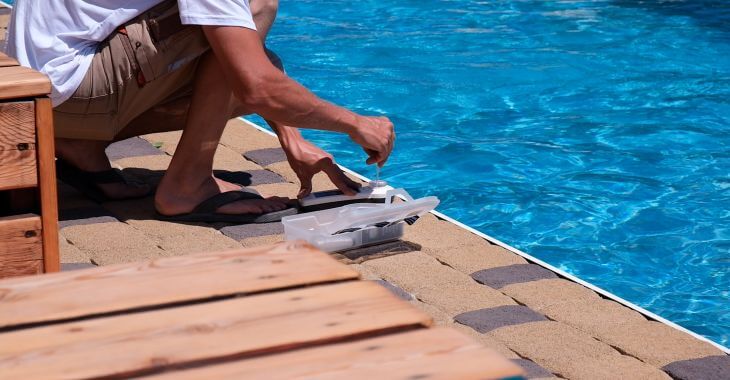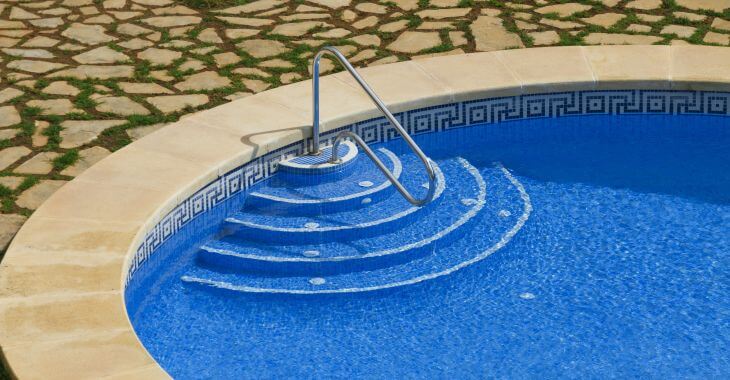Do You Know How Much Liquid Chlorine to Add to Pool Water?

A crystal-clear and inviting swimming pool is the dream of any pool owner. To maintain a safe and sanitary swimming environment, it is crucial to properly disinfect the pool water. Knowing how chlorine to add to pool water is a vital part of maintaining your swimming pool’s water quality.
The Importance of Chlorine in Pool Maintenance
Chlorine is a powerful and effective pool sanitizer. When added to pool water, it forms hypochlorous acid, a compound that kills bacteria, viruses, algae, and other contaminants. This ensures pool water remains free from harmful microorganisms that can cause illnesses or degrade water quality.
Factors Affecting Liquid Chlorine Dosage
Determining the appropriate amount of chlorine to add to your pool requires consideration of various factors:
- Pool Size: The size of your pool is a primary factor in calculating chlorine dosage. Larger pools require more chlorine to achieve the desired concentration.
- Water Temperature: Warmer water temperatures increase the rate of chlorine consumption. In hot weather, you may need to add more chlorine to maintain effective disinfection.
- Swimmer Load: The number of swimmers in the pool affects chlorine demand. The more people using the pool, the greater the chlorine depletion due to body oils, sweat, and contaminants introduced by swimmers.
- Sunlight Exposure: Sunlight can cause chlorine to degrade more quickly through a process known as photolysis. Pools that receive a lot of direct sunlight may require more frequent chlorine additions.
- pH Levels: The pH level of your pool water can influence chlorine’s effectiveness. Maintaining the correct pH range (typically between 7.2 and 7.6) ensures that chlorine remains active and efficient.
- Chlorine Stabilizer (Cyanuric Acid): Chlorine stabilizer, often in the form of cyanuric acid, helps protect chlorine from degradation due to sunlight. Pools with adequate stabilizer levels may require lower chlorine doses.
Calculating Chlorine Dosage
To calculate how much liquid chlorine to add to pool water, follow these steps:
- Determine Your Pool Volume: Measure the length, width, and depth of your pool to calculate its volume in gallons or liters. You can use various online calculators or formulas to make this calculation based on your pool’s shape.
- Check Your Chlorine Levels: Use a pool water testing kit to check the current chlorine levels in your pool. The ideal chlorine level for most pools is between 1.0 and 3.0 parts per million (ppm). Adjust your chlorine dosage based on the test results.
- Factor in the Chlorine Product: Liquid chlorine often contains around 10-12% available chlorine, but different brands can vary. Be sure to account for the chlorine concentration of your product when calculating dosage.
- Consider Chlorine Demand: Estimate the chlorine demand based on factors such as water temperature, bather load, and sunlight exposure. In warmer weather with heavy pool usage and strong sunlight, you may need to add more chlorine to compensate for higher demand.
- Calculate Dosage: Use a chlorine dosage chart or an online calculator to determine the amount of chlorine to add to your pool based on its volume and current chlorine levels. Take into account the type of chlorine product you’re using.
- Add Chlorine Safely: Carefully add the calculated amount of chlorine to your pool. Follow the manufacturer’s instructions for the specific chlorine product you’re using. It’s typically best to disperse the chlorine evenly across the pool surface or through a pool skimmer to ensure even distribution.
- Monitor and Adjust: Regularly test your pool water to monitor chlorine levels. Adjust your chlorine dosage as needed to maintain the recommended chlorine range for your pool.
How Much Liquid Chlorine to Add Weekly
Liquid chlorine contains around 10-12% of available chlorine. Carefully consider factors like pool size, water temperature, swimmer load, and follow product instructions when calculating chlorine dosage.
On average, for a typical residential pool, you might need to add approximately 1 to 2 gallons (3.8 to 7.6 liters) of liquid chlorine per 10,000 gallons (37,800 liters) of pool water per week to maintain proper disinfection levels.
Maintaining Balanced Water Chemistry
In addition to chlorine, it’s essential to maintain balanced water chemistry in your pool. Regularly test and adjust the pool’s pH, total alkalinity, calcium hardness, and cyanuric acid levels. Balanced water chemistry ensures that chlorine remains effective for safety and water quality.
How Soon Can You Swim After Adding Chlorine to Your Pool?
After adding chlorine to your pool, it’s generally recommended to wait at least 30 minutes to one hour before swimming. This waiting period allows the chlorine to disperse evenly throughout the pool water and reach an effective disinfection level, ensuring a safe and sanitized swimming environment.

Knowing how much liquid chlorine to add to your pool water is vital for maintaining safe and clean swimming conditions. If you’re unsure about pool maintenance or water chemistry, consider seeking guidance from a professional pool service or a certified pool operator.
